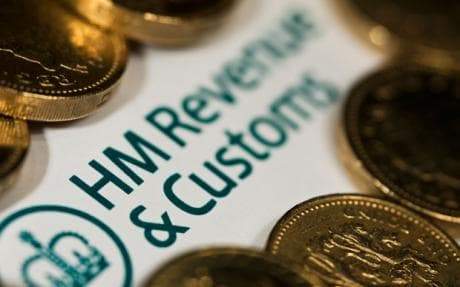
The Wall Street titan crosses his legs, relaxes his shoulders, leans back in his chair and expresses a sentiment shared by every single one of his rivals: ‘This year is a wash.’ What he means is that even if the business of advising companies, raising money and trading securities comes roaring back with a vengeance, it won’t offset the destruction wrought in the first half of the year.
Worse still, like his cross-town and trans-Atlantic competitors, this titan has only begun to adequately resize his costs and staffing levels to the new realities of the investment banking business.
As Treasury Secretary Hank Paulson made clear when introducing his plan for reforming the US financial system, the money industry goes through these kinds of contortions every five to seven years. Naturally, that doesn’t make it any easier for people in the industry to stomach, even if when times are good they pay lip service to the idea conditions can shift on a dime. Common sense would dictate that they hold back chunks of their bonuses to prepare for rainier days. Yet the collapse of Bear Stearns revealed a flaw in the way Wall Streeters typically have done this.
Like most securities firms, Bear Stearns loaded its top performers with shares in the company – indeed, employees owned about a third of the company as 2008 began. A senior managing director at the firm might have received a $10-million bonus. It would not have been uncommon for that banker or trader to have taken $7 million of that in restricted shares of Bear Stearns. Over the course of a five-year bull market that executive could have racked up some $35 million of such stock. And with the uplift in brokerage shares that accompanied the rising market, that could have translated into holdings of as much as $100 million – certainly enough to brace for Paulson’s dictum about the predictability of a decline in the financial business every few years.
What happened to Bear Stearns in March set these well-laid plains asunder – and created a new anxiety among the banking industry’s practitioners. Bear Stearns suffered a good, old-fashioned bank run. Set aside whether you believe chief executive Alan Schwartz’s Congressional testimony that nefarious hedge funds kicked off the vicious circle that led to Bear Stearns’ inability to fund its highly-leveraged balance sheet. The fact is that the events that brought down the smallest of Wall Street’s five large listed firms could potentially befall the others. While the folks at Goldman Sachs, Lehman Brothers, Morgan Stanley and Merrill Lynch might have wished for the disappearance of a plucky rival like Bear Stearns, the evaporation of one of their kind is of very little comfort.
Most discomfiting of all for surviving masters of the universe is the personal arithmetic to Bear Stearns’ collapse. Return to that senior managing director who, going in to 2007, held restricted Bear Stearns stock worth $100 million. Now, the sub-prime crunch – which fittingly began in earnest last June when Bear Stearns was forced to bail out two of its faltering hedge funds – would have taken a chunk out of that. Based on the decline of Bear Stearns stock from about $150 a share in April 2007 to around $90 at the end of the year, that would have left the Bear Stearns executive with stock valued at around $60 million at the dawn of this year.
But as the credit crunch worsened, Bear Stearns shares lost another third of their value – as did many of its competitors on the Street. By the middle of March, that would have brought our $100-million-man’s holdings down to about $40 million. That’s a drag, of course, but still a comfortable sum of money to prepare for the inevitable burp in the business that Secretary Paulson described. Then things really hit the fan. After futile attempts by Bear Stearns to fend off rumours about its financial condition, on Friday March 14 the firm was essentially bankrupt. Unable to fund its liabilities, the firm sought emergency funding from the Federal Reserve through a financial lifeline established by JPMorgan Chase. Over the following weekend, the Fed and Treasury shepherded Bear Stearns into a takeover by JPMorgan, which offered $2 a share on Sunday evening for the firm’s equity.
Put that in human perspective. Our Bear Stearns Alpha executive, who a week earlier might have fretted about holding stock worth ‘just’ $40 million, woke up on Monday morning – had he slept at all – holding shares worth a sum total of just over $1m. That would likely be insufficient to pay the annual maintenance costs and property taxes on his various properties on the Upper East Side and Bridgehampton. Knowing how this would likely affect morale at the firm he’d agreed to absorb, JPMorgan boss Jamie Dimon did see fit to sweeten his offer a few days later – to $10 a share. Our mythical managing director, therefore, saw his $100 million nest egg transformed to $7 million.
This is the new reality under which the minions of the money industry must now toil. Logically, they might ask to receive more cash, and fewer of their employers’ shares, when bonus time comes. But that argument won’t get very far. Not only is it in the interests of shareholders for staff compensation to be tied to the performance of the firm. It is also the direction in which regulators want the financial system to move. Indeed, the Fed nudged JPMorgan to keep its offer for Bear Stearns low precisely to avoid fostering further moral hazard on Wall Street.
The ‘asymmetrical incentives’, under which bankers received huge bonuses in good years, but suffered no penalties in bad ones, are over. As Mario Draghi, the Italian central bank chief who is leading efforts to reform the global banking system by the Group of Seven, says: ‘We want to recreate a financial-services industry capable of creating value but immune to the perverse incentives that characterised the recent past.’







